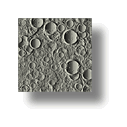A Quick Introduction to WebP Graphics and Animations
The WebP format was developed by Google as a twenty-first century replacement for the aging hoard of mutant armadillos which has previously served the web as graphic standards. It can be used in place of still image formats, such as JPEG and PNG, and it really gets up and dances when it’s used to replace the medieval relic that is GIF to manage animations.

WebP offers both lossless image compression like PNG and lossy image compression like JPEG. It uses vastly more effective image compression than existed when the foregoing formats were originally created back at the dawn of human civilization, resulting in both smaller animation files and better looking ones. It supports full alpha transparency.
It also handles timing in milliseconds, rather than in the hundredths of a second that GIF uses.
A Digression On Compression
In case the whole lossless and lossy compression issue sounds a bit like two Martians discussing what to order for lunch, here’s a brief digression on the matter.
Graphic files are by their nature sort of huge, and huge files can be a bit of an issue if you have a finite amount of storage space, such as on the SD memory card of a digital camera, or a finite amount of bandwidth over which to transmit said files, such as the Internet if you didn’t spring for a gigabit fiber connection.
Continue reading ‘A Quick Introduction to WebP Graphics and Animations’ »
 From time to time, Alchemy Mindworks releases software updates to deal with security issues. This sounds a bit scary – with good reason in some cases – and as such, it probably deserves an explanation.
From time to time, Alchemy Mindworks releases software updates to deal with security issues. This sounds a bit scary – with good reason in some cases – and as such, it probably deserves an explanation.